-
Recent Posts
- Trump’s “Big Beautiful Bill” Is a Grotesque Giveaway to Fossil Fuel Billionaires While Adding $3.3 Trillion to Nation’s Debt
- Senator Chris Murphy Charges that Trump “Has Opened a Channel for Bribery”
- Congressman Casten: Trump’s Assault on the Rule of Law Is Causing Capital Flight Out of U.S. by Foreign Investors
- Trump’s Approval Rating Drops to 80-Year Low; IMF Says U.S. Tariffs Now Exceed the Highs During the Great Depression
- Nasdaq Has Lost More than 3,000 Points Since Trump’s First Full Day in Office in 2025; the Pain Has Barely Begun
- The Bond Crisis Last Week Was a Global No-Confidence Vote in U. S. President Donald Trump
- Trump’s Tariff Plan Guts $5 Trillion in Stock Value in Two Days; Senator Warren Calls for Emergency Action Before Markets Open on Monday
- Trump’s Attacks on Big Law, Universities, and the Media Have a Common Goal: Silence Dissent Against Authoritarian Rule
- Trump Administration Gives All Clear to Laundering Money through Shell Companies and Bribing Foreign Officials
- Four Megabanks on Wall Street Hold $3.2 Trillion in Uninsured Deposits – Which May Explain Senator Schumer’s Pivot to the GOP to Stop a Government Shutdown
- Here’s What Came Crashing Down Yesterday for Trump’s “Genius” Guy, Elon Musk: Tesla Stock, Access to Twitter (X), His Years of Secret Calls with Putin
- After Banning the Associated Press, Trump Is Now Targeting Specific Journalists That He Wants to See Fired
- Closely Watched Atlanta Fed Model Predicts Negative U.S. Growth in First Quarter
- Trump’s Gangster Diplomacy Makes Front Page Headlines Around the Globe
- Who Benefits Alongside Elon Musk If He Succeeds in Killing the CFPB: the Megabanks on Wall Street that Underwrite His Tesla Stock Offerings
- In Trump 1.0, the State Department Used Taxpayer Money to Publish a Book Elevating Elon Musk to a Superhero; It Was Funded by USAID, the Agency Musk Wants to Quickly Shut Down
- News Host Joy Reid Raises Threat of Trump Selling U.S. to Putin; Ten Days Later Her Show Is Cancelled
- Elon Musk’s DOGE Appears to Be Violating a Court Order; It Has Taken Down Hundreds of YouTube Videos that Educate Americans on How to Avoid Being Swindled
- Barron’s Releases Audio of Jamie Dimon Cursing Out His Workers at a Town Hall, as Dimon Plans to Dump Another One Million JPM Shares
- There’s One Federal Investigative Agency that Neither Trump nor Elon Musk Can Touch: It Just Opened an Investigation into DOGE
- Elon Musk’s Companies Were Under Investigation by Five Inspectors General When the Trump Administration Fired Them and Made Musk the Investigator
- Donald Trump Gives the Greenlight to Goldman Sachs and JPMorgan Chase to Return to Bribing Foreign Officials
- After Tech Geeks Built a Back Door to Loot Billions from FTX, Republicans Refuse to Investigate What Elon Musk’s Tech-Squad Did Inside the U.S. Treasury’s Payment System
- Former Prosecutor, Now U.S. Senator, Informs Tesla That CEO Musk May Be Violating Federal Law and to “Preserve All Records”
- Trump’s Hedge Fund Guy Is Now Overseeing the U.S. Treasury, IRS, OCC, U.S. Mint, FinCEN, F-SOC, and the Consumer Financial Protection Bureau
- As Elon Musk Begins Shutting Down Payments to Federal Contractors, a Strange Money Trail Emerges to His Operatives Inside the U.S. Treasury’s Payment System
- JPMorgan Chase Charged by Yet Another Internal Whistleblower with Cooking the Books
- We Asked Google’s AI Search Model, Gemini, Questions About the Fed and Wall Street Megabanks: It Got the Answers Dead Wrong
- With Trump and Melania’s Crypto Coins Likely to Raise Legal Challenges, Why Didn’t Trump Fire the SEC’s Inspector General in His Purge of IGs?
- Fossil Fuel Industry Could End Up Paying Tens of Billions for LA Wildfires and Deceiving the Public on Climate Change for Decades
- It’s Being Called the Biggest Grift by a President in U.S. History: Trump and First Lady Launch their Own Crypto Coins
- Trump Plans to Install a Fracking CEO to Head the Energy Department and Declare a National Emergency on Energy to Gain Vast Powers
- Fossil Fuel Money Played a Role in the Los Angeles Fires and the Push to Install Pete Hegseth as Secretary of Defense
- When It Comes to Wealth Retention in Retirement, Concrete May Be the New Gold
- Wall Street Watchdog Warns “Clock Is Ticking on a Coming Catastrophic Financial Crash”
- Wall Street Is Sending the Same Message to Americans on Fossil Fuel Financing that It Sent on Cigarettes: Drop Dead
- In a Six-Week Span, this Dark Pool with a Curious Past Traded 3.7 Billion Shares
- Wall Street’s Lobby Firm Hired Eugene Scalia of Gibson Dunn to Sue the Fed for Jamie Dimon
- Postmaster General Louis DeJoy Made $561,051 in Compensation in 2024, as Mail Costs Spiked and Delivery Deteriorated
- Fed Chair Jay Powell Sends a Bold Message to Trump and Tanks the Dow by 1123 Points
- The Head of Fixed Income at T. Rowe Price Makes the Scary Case for the 10-Year Treasury to Spike to 6 Percent
- $663 Billion in Cash Assets Have Gone Poof at the Largest U.S. Banks
- Donald Trump to Ring Bell at New York Stock Exchange Today as Hit List Posters Appear in Manhattan Targeting Wall Street CEOs
- Trump Has a Slush Fund to Prop Up the Dollar – Will He Use It to Prop Up Bitcoin Instead?
- A CEO Assassination; a Billionaire Heiress/NYPD Commissioner; a Secret Wall Street Spy Center – Here’s How They’re Connected
- Despite More than 1600 Tech Scientists Signing a Letter Calling Crypto a Sham, Trump Names a Crypto Cheerleader for SEC Chair
- The Fed Rings a Warning Bell: Hedge Funds and Life Insurers Are Reporting Historic Leverage
- Trump’s Nominee for FBI Director, Kash Patel, Has Businesses Financially Intertwined with Trump
- Donald Trump Is at Risk of Getting Named in a Fossil Fuels Conspiracy Lawsuit
- Trump Is Having Difficulty Getting a Lawyer to Accept the Nomination for SEC Chair: Here’s Why
Search Results for: Federal Reserve
Two Fed-Supervised Banks Blew Up Last Week; Two More Dropped Over 40 Percent Yesterday; and the Fed Wants to Investigate Itself — Again

By Pam Martens and Russ Martens: March 14, 2023 ~ Last Wednesday, federally-insured Silvergate Bank announced that it was closing shop and liquidating. Its parent’s stock price (Silvergate Capital, ticker SI) had lost over 90 percent of its value over the prior year; it was under a Justice Department investigation for how it moved money for crypto-kingpin Sam Bankman-Fried’s house of frauds; and its depositors were fleeing. Oh – and by the way – its primary regulator was the Federal Reserve Bank of San Francisco. Last Friday, California state regulators closed Silicon Valley Bank and the Federal Deposit Insurance Corporation (FDIC) became the receiver. Its stock price had lost over 80 percent of its market value over the prior year; $150 billion of its $175 billion in deposits were uninsured, either because they exceeded the $250,000 FDIC cap and/or they were foreign deposits. The bank was effectively operating as a Wall … Continue reading
Over the Past Year, Inflation Eroded Your Purchasing Power while the Stock Market Ate Away Your Investment Gains
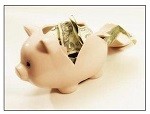
By Pam Martens and Russ Martens: March 7, 2023 ~ On Friday, March 4, 2022, the Dow Jones Industrial Average closed at 33,614.7971. Yesterday, one year later, the Dow closed at 33,431.44, a negligible loss of a fraction of one percent – but still a loss. The Dow is composed of just 30 stocks. The S&P 500, a broader stock market index, includes the common stocks of 500 of the largest companies in the U.S. Over the past year, the S&P 500 fared even worse than the Dow. It went from 4,328.8729 on Friday, March 4, 2022 to yesterday’s closing price of 4,048.42 – a decline of 6 percent. The tech heavy Nasdaq Composite, which consisted of 3,607 component companies as of yesterday according to Nasdaq, delivered the worst performance of the three major indices over the past year. It traveled from 13,313.438 on Friday, March 4, 2022 to a closing … Continue reading
The Same Day Sam Bankman-Fried Is Hit with a New Count of Bank Fraud, Three Regulators Warn About Crypto Bank Runs
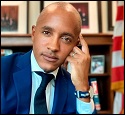
By Pam Martens and Russ Martens: February 27, 2023 ~ On December 13, the U.S. Department of Justice released an 8-count criminal indictment against the former crypto kingpin, Sam Bankman-Fried. He was charged with conspiracy to commit wire fraud, wire fraud, conspiracy to commit commodities fraud, conspiracy to commit securities fraud, conspiracy to commit money laundering, and conspiracy to defraud the Federal Election Commission and commit campaign finance violations. Last Thursday, the Department of Justice added four additional criminal counts against Sam Bankman-Fried in a superseding indictment. These include: bank fraud; conspiracy to operate an unlicensed money transmitting business; and two counts involving the purchase and sale of derivatives. Bankman-Fried’s jury trial is scheduled to start in October. The charge of bank fraud is something that jury members can get their minds around – particularly when the alleged bank fraud is shown to have taken place at federally-insured banks which are backstopped … Continue reading
These Charts Scared the Stock Market into a 700-Point Drop Yesterday
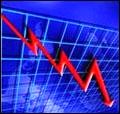
By Pam Martens and Russ Martens: February 22, 2023 ~ The Dow Jones Industrial Average plunged 697 points by the closing bell yesterday, wiping out all of its gains this year. Here’s a rundown of what happened. At 2 p.m. ET today, the Federal Reserve will release the minutes of the Federal Open Market Committee (FOMC) meeting it held on January 31 and February 1. The stock market is particularly skittish on the day prior to the release of those minutes, out of concern that an overly hawkish tone on interest rates will tank stocks. Given that skittishness, all the stock market needed for a major selloff was a trigger. It got that when Bloomberg News published this headline at 1:36 a.m. in the morning: Morgan Stanley Says S&P 500 Could Drop 26% in Months. Morgan Stanley’s opinion matters for two main reasons: it has just shy of 16,000 stockbrokers (a/k/a … Continue reading
Credit Suisse Tanks Yesterday to $3.02; It’s Lost Over 90 Percent of Its Market Value Since 2007; It’s Not Alone
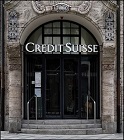
By Pam Martens and Russ Martens: February 10, 2023 ~ Credit Suisse continued its long death spiral yesterday, losing 15.64 percent of its market value in one trading session to close at $3.02 on the New York Stock Exchange. The trading action came on the heels of an earnings report that was excruciatingly bad – even for Credit Suisse. The Global Systemically Important Bank (G-SIB), which means it’s interconnected to other G-SIBs that could bring down the global financial system, reported yesterday that its clients had yanked over $100 billion in just the fourth quarter — which was more than eight times the outflow in the third quarter. Its pre-tax loss for the quarter was $1.51 billion, marking its fifth consecutive earnings loss. Credit Suisse is Switzerland’s second largest bank, after UBS, but its troubled history looks more like that of a bank in a banana republic. On March 26, 2021, … Continue reading
Add 4,281 Hedge Fund Clients to What Makes JPMorgan Chase the Riskiest Mega Bank in the U.S.

By Pam Martens and Russ Martens: January 30, 2023 ~ According to a Yale School of Management study, in 2013 JPMorgan Chase had 1,339 hedge fund clients. As of July of last year, that number had soared to 4,281 according to the annual Convergence Inc. study. While Goldman Sachs and Morgan Stanley topped the total number of hedge fund clients (with 5,150 and 4,964, respectively) JPMorgan Chase ranked number one in terms of hedge fund Assets Under Advisement (AUA). (See Convergence Inc. study linked above.) There’s a big problem here that federal bank regulators are choosing to ignore at the peril of the U.S. financial system. JPMorgan Chase, unlike Goldman Sachs and Morgan Stanley, is the largest federally insured, taxpayer backstopped, depository bank in the United States with more than $2.47 trillion in deposits as of June 30, 2022. Unfortunately, as a result of the repeal of the Glass-Steagall Act in … Continue reading
In 16 Years, the Fed Has Approved 4,506 Bank Mergers and Denied One

By Pam Martens and Russ Martens: January 19, 2023 ~ On Tuesday, Jerome Powell’s Federal Reserve once again thumbed its nose at President Biden’s antitrust directive regarding the creation of more mega banks through merger. This time around, the Fed allowed the Bank of Montreal, with assets of $834 billion, and its subsidiary, BMO Financial, to gobble up Bank of the West, based in San Francisco. Following the merger, Bank of the West is to be merged into Bank of Montreal’s subsidiary bank, BMO Harris Bank. On Friday, July 9, 2021, President Biden released a sweeping Executive Order that warned federal bank regulators against actions that create “excessive market concentration” with specific mention of bank merger activity. One business day later, the Federal Reserve announced that it had approved another bank merger. According to the Fed’s own data, since January 1, 2006, it has approved 4,506 bank mergers, while denying one application. (See … Continue reading
After 16 Months, There Are Still No Arrests in the Fed’s Trading Scandal

By Pam Martens and Russ Martens: January 5, 2023 ~ This coming Saturday will mark the 16-month anniversary of former Wall Street Journal reporter Mike Derby setting off a media firestorm with his reporting that the then President of the Dallas Fed, Robert Kaplan, had “made multiple million-dollar-plus stock trades in 2020,” a year in which Kaplan was a voting member of the Fed’s Federal Open Market Committee (FOMC) with access to inside information. While the trading scandal spread to numerous other Fed officials, including Fed Chairman Jerome Powell, the case against Kaplan seemed like a prime candidate for a criminal investigation by the U.S. Department of Justice. Not only was Kaplan sitting on inside information gleaned from the Fed, but he was making market-moving statements himself on television. When Wall Street On Parade obtained Kaplan’s trading records from the Dallas Fed shortly after Derby’s article appeared, it became clear that the stock trading … Continue reading
Secretary Yellen, We’ve Got a “Staggering” Problem: New Report Shows Foreign Banks Have Secret Derivative Debt that Is “10 Times their Capital”
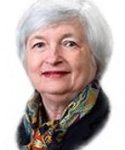
By Pam Martens and Russ Martens: December 6, 2022 ~ U.S. Treasury Secretary Janet Yellen has the dual role of Chairing the Financial Stability Oversight Council (F-SOC), whose role is to provide “comprehensive monitoring of the stability of our nation’s financial system.” Heads of each of the federal agencies that supervise Wall Street and the mega banks sit in on meetings of F-SOC. One would think that such an august body would have a handle on “staggering” threats to the U.S. financial system – especially since F-SOC was created under the 2010 Dodd-Frank financial reform legislation to prevent a replay of the off-balance sheet derivatives that crashed the U.S. economy in 2008 and forced an unprecedented and secret bailout of U.S. and foreign global banks by the Federal Reserve to the tune of $29 trillion. If Yellen is aware of the latest threat to financial stability, she’s not sharing the details … Continue reading
Credit Default Swaps Blow Out on Credit Suisse as its Stock Price Hits an All-Time Low of $2.82

By Pam Martens and Russ Martens: December 1, 2022 ~ That $4 billion capital raise that was supposed to shore up confidence in global banking behemoth Credit Suisse turns out to have been too little, too late. Yesterday, 5-year Credit Default Swaps (CDS) on Credit Suisse blew out to 446 basis points. That’s up from 55 basis points in January and more than five times where CDS on its peer Swiss bank, UBS, are trading. The price of a Credit Default Swap reflects the cost of insuring oneself against a debt default by the bank. Who might be desperate to buy protection against a default by Credit Suisse and driving up the cost of that protection? The mega banks on Wall Street that are counterparties to its derivative trades come to mind, as well as hedge fund speculators. Things don’t look any brighter this morning for Credit Suisse. Its shares are … Continue reading

